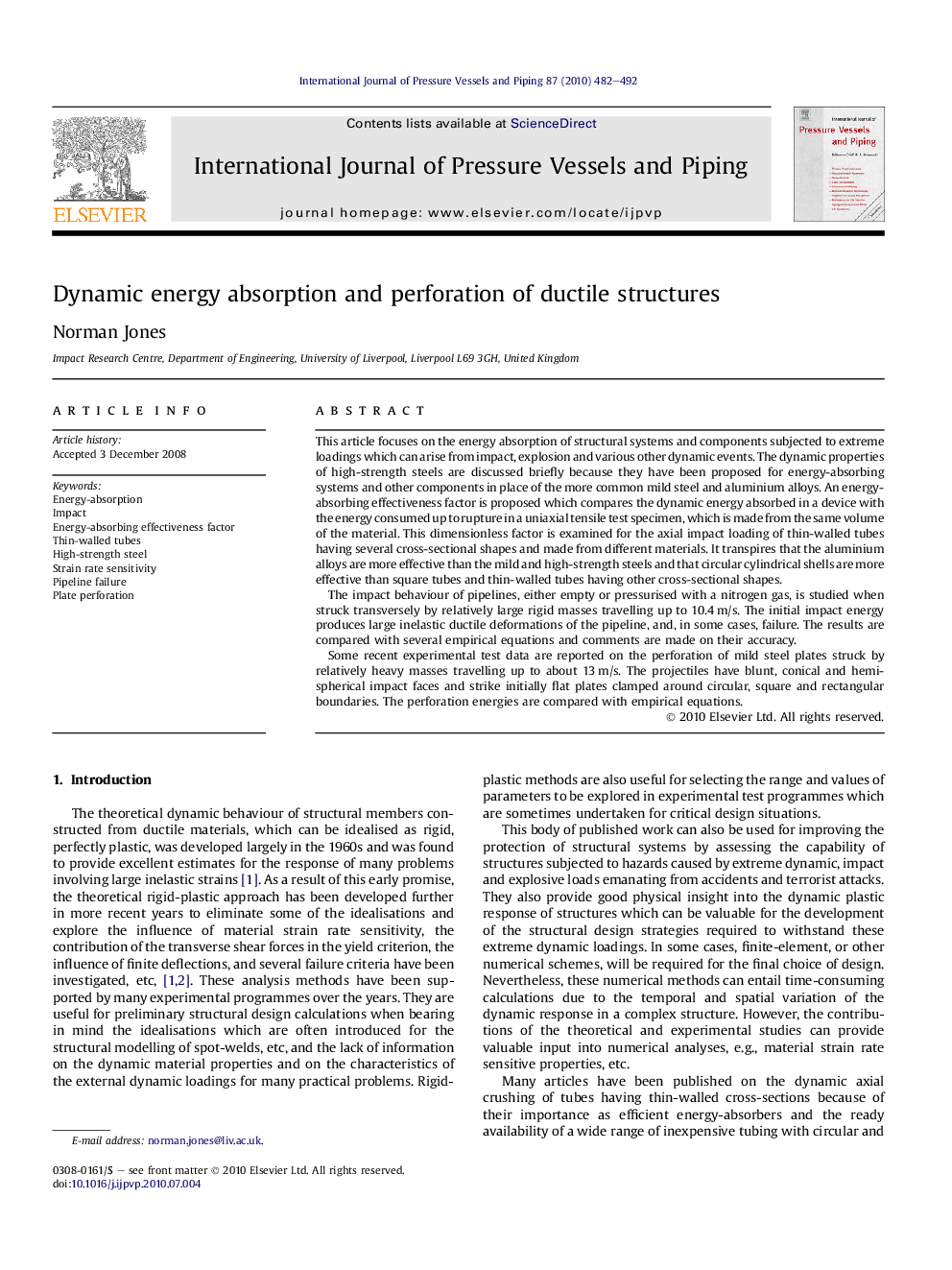| Article ID | Journal | Published Year | Pages | File Type |
|---|---|---|---|---|
| 790841 | International Journal of Pressure Vessels and Piping | 2010 | 11 Pages |
This article focuses on the energy absorption of structural systems and components subjected to extreme loadings which can arise from impact, explosion and various other dynamic events. The dynamic properties of high-strength steels are discussed briefly because they have been proposed for energy-absorbing systems and other components in place of the more common mild steel and aluminium alloys. An energy-absorbing effectiveness factor is proposed which compares the dynamic energy absorbed in a device with the energy consumed up to rupture in a uniaxial tensile test specimen, which is made from the same volume of the material. This dimensionless factor is examined for the axial impact loading of thin-walled tubes having several cross-sectional shapes and made from different materials. It transpires that the aluminium alloys are more effective than the mild and high-strength steels and that circular cylindrical shells are more effective than square tubes and thin-walled tubes having other cross-sectional shapes.The impact behaviour of pipelines, either empty or pressurised with a nitrogen gas, is studied when struck transversely by relatively large rigid masses travelling up to 10.4 m/s. The initial impact energy produces large inelastic ductile deformations of the pipeline, and, in some cases, failure. The results are compared with several empirical equations and comments are made on their accuracy.Some recent experimental test data are reported on the perforation of mild steel plates struck by relatively heavy masses travelling up to about 13 m/s. The projectiles have blunt, conical and hemispherical impact faces and strike initially flat plates clamped around circular, square and rectangular boundaries. The perforation energies are compared with empirical equations.
